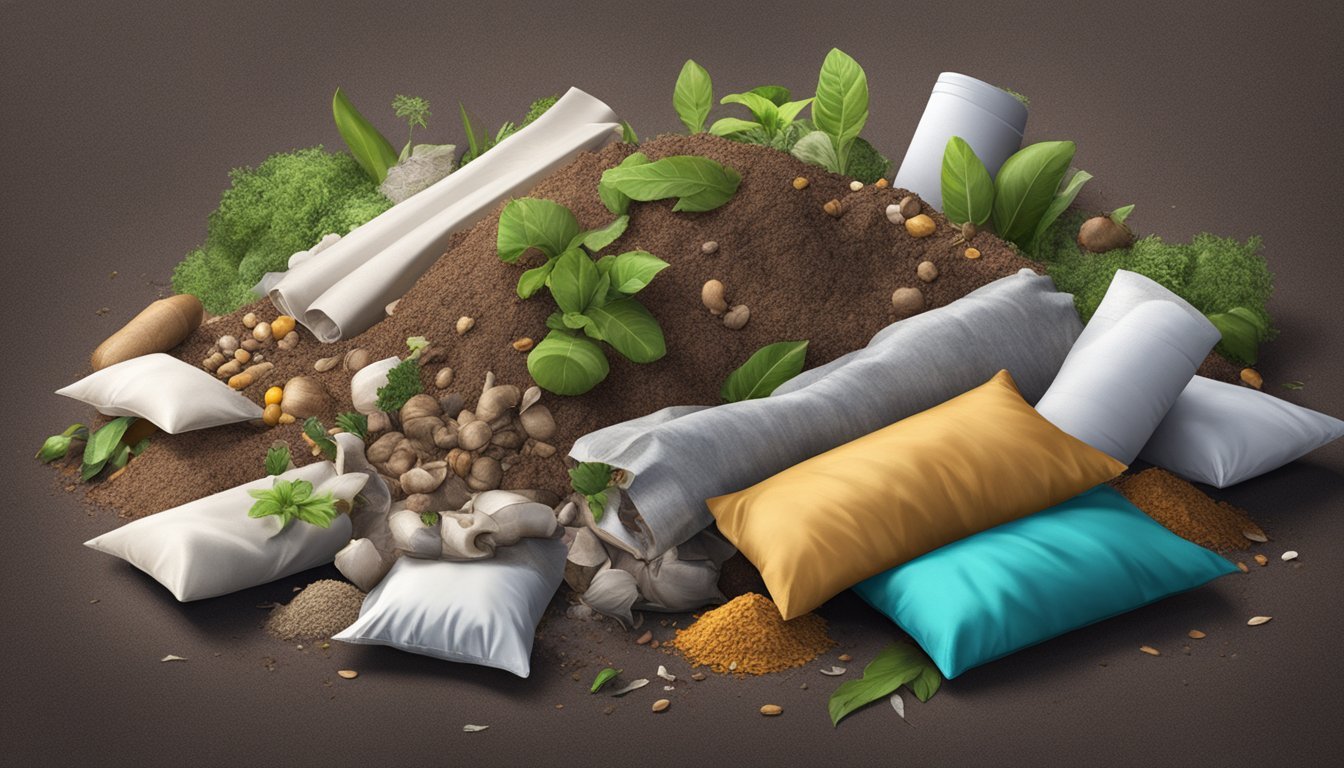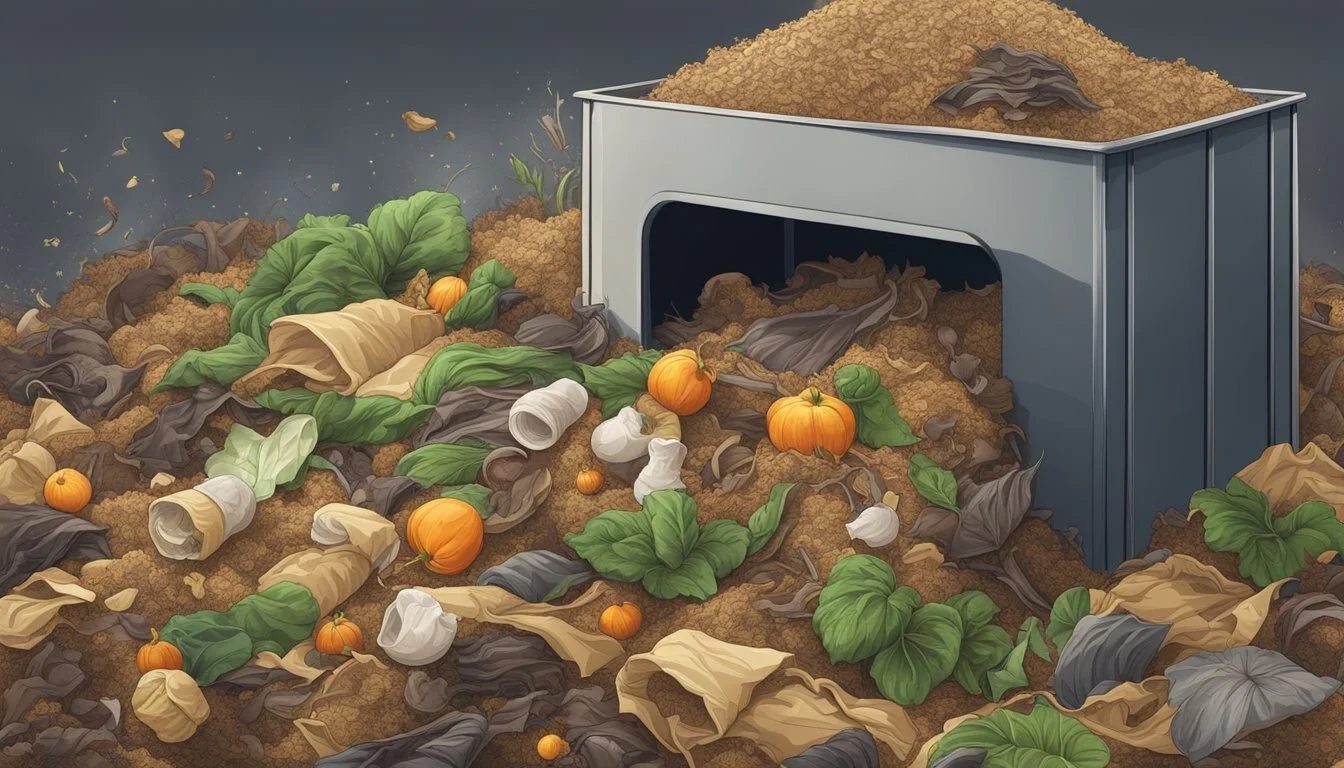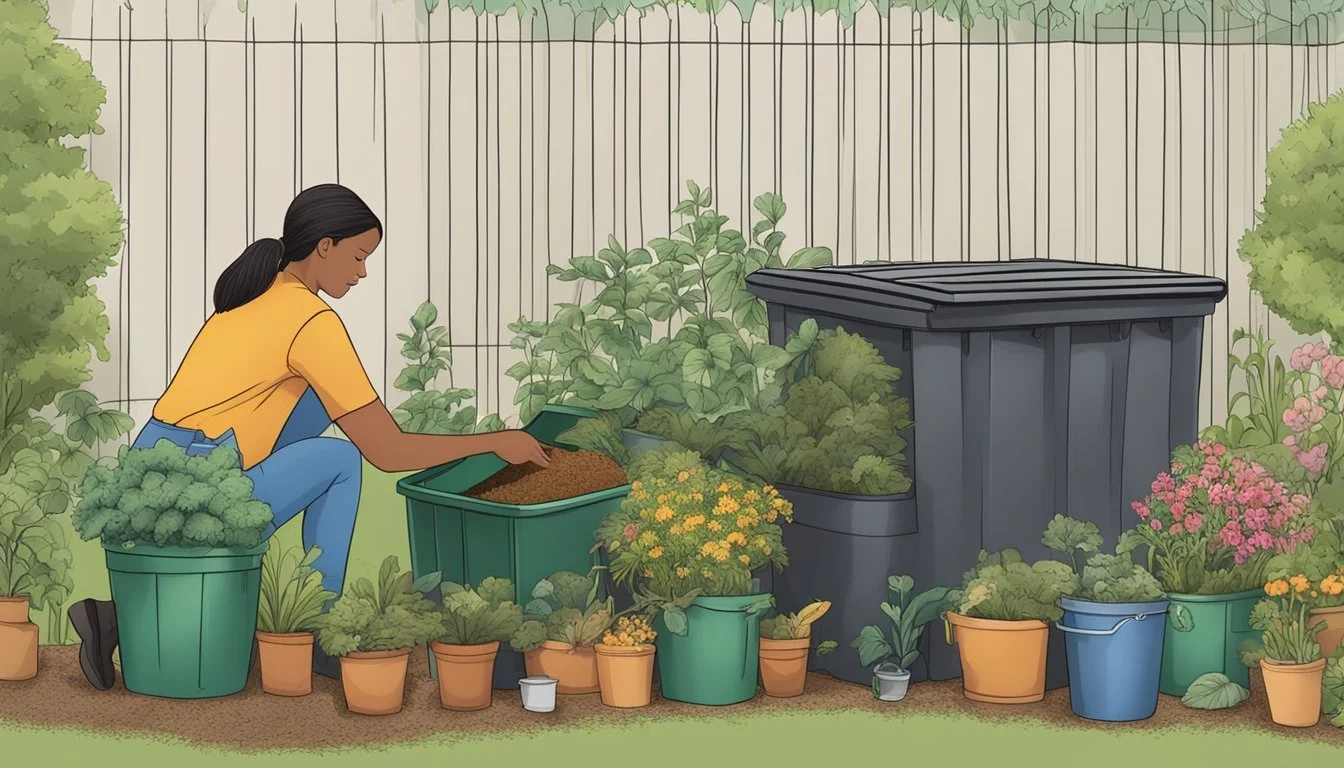Can You Compost Silk?
Understanding Biodegradability of Natural Fibers
Composting is a natural process of recycling organic material such as leaves and vegetable scraps into a rich soil amendment that gardeners affectionately call "black gold." Among various materials that can be added to the compost pile, natural fibers are often overlooked. Silk, in particular, stands out as an interesting case. It is a protein-based natural fiber produced by silkworms and is known for its luxurious feel and strength. But its qualities go beyond just its textile use; silk is also biodegradable.
Unlike synthetic fibers which can take hundreds of years to break down, silk decomposes much more quickly under the right conditions. Since it is a natural protein, similar to the materials found in food waste, it can contribute to the compost's nutrient profile. When silk is added to compost, it slowly breaks down, adding valuable nitrogen to the mix, which is an essential component for the composting process. It's important to note that while silk is compostable, the rate at which it breaks down and its utility in the creation of compost may vary based on environmental factors and the presence of other compostable materials.
Basics of Composting
Understanding the basics of composting is crucial for converting biodegradable materials into a valuable soil amendment. The process benefits the environment and contributes to sustainable waste management.
What Is Compost?
Compost is a nutrient-rich, soil-like material that results from the controlled decomposition of organic matter. The key ingredients include brown materials for carbon, like dead leaves and branches, and green materials for nitrogen, such as grass clippings and fruit and vegetable scraps. These components are broken down by microorganisms, resulting in a substance that enriches soil and supports plant growth.
The Importance of Composting
Composting plays a significant role in environmental conservation by reducing landfill waste and decreasing methane emissions, a potent greenhouse gas. It recycles organic material that would otherwise decompose anaerobically in landfills, producing harmful gases. Additionally, compost acts as a natural fertilizer, improving soil health without the need for chemical alternatives.
Composting Principles
The science of composting involves balancing the following elements to achieve efficient decomposition:
Carbon (Brown Materials): Provides energy for microorganisms.
Examples: Leaves, straw, and wood chips.
Nitrogen (Green Materials): Helps build the cell structure of new organisms.
Examples: Food scraps, lawn clippings, and manures.
Microorganisms: These tiny organisms, including bacteria and fungi, are the workhorses of composting, breaking down organic materials into compost.
Oxygen: Essential for aerobic decomposition; turning the compost pile ensures adequate airflow.
Moisture: A damp, but not soaking, environment is optimal; water helps to break down the materials.
By managing these elements, the compost pile turns organic matter into a stable, biodegradable form. The resulting compost serves as an effective soil conditioner, promoting better structure, aeration, and moisture retention.
Composting Materials
In the realm of composting, understanding the classification of materials and what to include or exclude is crucial for a successful composting process.
Green and Brown Materials
Compostable materials are often categorized into green and brown components, each serving a distinct purpose in the compost pile. Green materials are typically wet and high in nitrogen, which helps to accelerate the decomposition process. Examples include:
Coffee grounds
Tea bags
Vegetable scraps
Fresh grass clippings
Plant trimmings
On the other hand, brown materials are dry and rich in carbon, providing necessary structure to the compost. Common brown materials are:
Dry leaves
Sawdust
Newspaper
Corn cobs
Napkins
Natural fibers such as cotton, silk, hemp, and wool
A balanced mix of greens and browns is essential for maintaining proper moisture and aeration, facilitating the breakdown of materials into fertile compost.
Items to Exclude from Compost
Not all items are suitable for composting, as some may attract pests, introduce pathogens, or simply take an excessively long time to decompose. Materials to leave out of the compost bin include:
Meat and dairy products: Attract unwanted pests and can cause odor problems.
Synthetic fibers and plastics: Materials like nylon and polyester do not break down within a reasonable timeframe.
Coated paper products: Paper plates, cups, and other coated paper items often contain plastics or chemicals.
Pet wastes: From animals such as cats and dogs, may contain harmful pathogens.
Diseased plants: Can spread diseases to other plants when used as compost.
Leather: Takes a long time to break down and may have been treated with chemicals.
Materials with paint or chemical residues: Can release toxins into the compost.
By selecting the right green and brown materials and avoiding contaminants, composters can ensure a healthy, nutrient-rich compost suitable for gardening and soil enrichment.
Silk in Composting
In exploring the role of silk in composting, it is crucial to examine its compostability, the decomposition rate, the benefits brought to compost, and potential issues that may arise.
Is Silk Compostable?
Silk, being a natural fiber, is indeed compostable. It is derived from the cocoons of silkworms and is primarily a protein, which means it can break down naturally in a composting environment. Similar to other protein-based natural fibers like wool, silk adds a carbon-rich layer to compost.
The Rate of Silk Decomposition
The decomposition rate of silk in compost is relatively quick compared to other materials. However, the exact rate at which silk breaks down can vary depending on composting conditions such as moisture, temperature, and the presence of microorganisms.
Benefits of Silk in Compost
The inclusion of silk in compost can contribute positively to the composting process. Silk introduces a source of nitrogen to the compost pile, helping to balance the carbon-nitrogen ratio which is crucial for effective composting. It also enriches the compost with essential nutrients, promoting healthier soil once the compost is applied to the environment.
Potential Issues with Silk
While silk itself is compostable, certain silk garments may include non-compostable materials like dyes, chemicals, or blended synthetic fibers, all of which can contaminate the compost. It’s important to recognize the purity of the silk being added to ensure that it is free of substances that could hinder the composting process or harm the environment.
Composting Techniques
When composting silk or other biodegradable materials, selecting an appropriate composting method is crucial. The technique must accommodate the material's composition and ensure efficient breakdown by microorganisms.
Hot and Cold Composting Methods
Hot composting is an accelerated technique where the pile reaches higher temperatures, typically between 135 to 160 degrees Fahrenheit. This is achieved through a careful balance of nitrogen-rich materials, like kitchen scraps, and carbon-rich materials, such as shredded newspaper or dry leaves.
Nitrogen materials: kitchen scraps, green waste
Carbon materials: shredded paper, straw, wood chips
For cold composting, the process is slower, with the pile not generating much heat. Silk, being a protein fiber, benefits from the higher temperatures of hot composting to break down efficiently, but it can still decompose in a cold compost pile over a longer period.
Vermicomposting
Vermicomposting involves the use of worms, specifically red wigglers, to break down organic waste more quickly than traditional composting methods. Worms consume the waste and leave behind worm castings, a nutrient-rich compost. Vermicomposting is an aerobic process, as sufficient airflow is necessary for the worms and microorganisms to thrive.
Bokashi Composting
Bokashi composting is an anaerobic process that ferments organic waste, including silk, in a sealed container. This method relies on a specific bokashi bran that contains bacteria and fungi to accelerate decomposition. The bokashi process produces a nutrient-rich tea that can be used on plants, and the remaining solids must be buried or added to a traditional compost bin to fully break down.
Compost Usage and Benefits
Composting is a process that offers significant advantages for soil health and environmental sustainability. By transforming organic materials into compost, it provides essential nutrients to the ecosystem while reducing waste that would otherwise end up in landfills.
Enriching Soil
Compost acts as a soil conditioner, enhancing the structure and texture of the soil. The addition of compost to gardens improves water retention, aeration, and drainage. As a nutrient-rich amendment, compost provides plants with essential elements required for growth, such as nitrogen, phosphorus, and potassium.
Reducing Landfill Waste
Diverting organic material from landfills to compost bins significantly decreases methane emissions, a potent greenhouse gas. By repurposing what would be considered waste, composting lessens the burden on landfill space, thus contributing positively to the environment.
Supporting Biodiversity
Incorporating compost into the earth supports a diverse range of organisms within the ecosystem, from tiny microbes to earthworms, which play a crucial role in soil health and structure. This biological activity not only breaks down organic material but also promotes a balanced ecosystem conducive to plant growth.
Compost Maintenance
Proper compost maintenance involves careful balance of moisture, temperature, and aeration to ensure efficient decomposition. These factors aid in creating a conducive environment for the microorganisms that break down compost materials.
Aeration and Moisture Control
Aeration is crucial in a compost pile because it provides the necessary oxygen to the decomposing microorganisms. Without sufficient oxygen, the pile can become anaerobic, which slows decomposition and can cause unpleasant odors. To maintain aeration:
Turn the compost pile regularly using a pitchfork or a compost aerator tool.
Shred larger items before adding them to the pile to improve air circulation.
Moisture control is equally important as microorganisms need water to survive but not so much that the pile becomes soggy. The moisture level should be akin to a wrung-out sponge. To control moisture:
Add water in dry spells to maintain dampness.
If too wet, mix in dry, brown materials like leaves or straw to absorb excess moisture.
Temperature Management
The temperature of the compost pile is an indicator of microbial activity. An ideal range is between 90 to 140 degrees Fahrenheit (32 to 60 degrees Celsius). To manage temperature:
Ensure the pile is an appropriate size; a minimum of 3 feet by 3 feet by 3 feet.
The center of the pile will heat up; redistribute heat by turning the pile.
If the pile is too cool, adding more nitrogen-rich materials, like food scraps or grass clippings, can increase activity and temperature.
Compost Maturation and Harvest
As the materials in the compost pile decompose, the pile will shrink and mature into a nutrient-rich soil amendment. This generally takes a few months to a year. To recognize finished compost:
It will be dark, crumbly, and have an earthy smell.
It should have no remnants of the original materials.
Prior to using the compost, sieve it to remove any large, undecomposed pieces which can be returned to a new compost pile.
Environmental Impact
Silk, as a natural protein fiber, can be composted, leading to positive environmental implications, particularly in reducing waste and mitigating the emission of greenhouse gases from landfills.
Lifecycle Analysis of Composting Materials
When considering the lifecycle of materials, the biodegradability of silk distinguishes itself from synthetic fibers, which are made from petrolatum products (oil-based) and take much longer to decompose. Composting silk can lead to a significant reduction of waste, as natural fibers decompose far quicker under the right conditions. Unlike materials such as plastic, which can take centuries to break down, silk can potentially revert back to the environment within a few years, joining the composting process alongside other natural materials.
Reducing Carbon Footprint with Compost
Integrating silk into the composting process can help reduce the carbon footprint of textile waste by avoiding the methane emissions associated with a landfill. Methane, a potent greenhouse gas, is released when organic materials are deprived of oxygen as they break down in landfills. Composting, on the other hand, occurs aerobically, meaning with the presence of oxygen. This leads to the production of carbon dioxide instead of methane, which is significant, as methane has a much greater impact on global warming compared to carbon dioxide. The act of composting silk rather than discarding it into landfills contributes to a loop of sustainability, essentially turning waste back into usable soil, which can reduce dependence on chemical fertilizers and enhance soil health.









